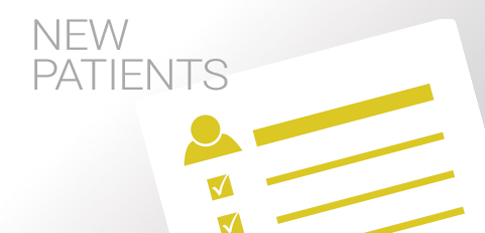Emergency Care
True orthodontic emergencies are very rare, but if they do occur we are available for you. First, call our office. Often a problem can be resolved with a brief conversation on the phone. If this is not possible, we will ask you to come into the office to remedy the situation.
You might be surprised to learn that you may be able to temporarily solve many problems yourself until you can be seen for an appointment with our office. If you are able to alleviate the discomfort yourself, it is very important that you still call our office during normal office hours to schedule a time to repair the problem. Allowing your appliance to remain damaged for an extended period of time may result in disruptions in your treatment plan and increased treatment time.
The following solutions may help you relieve your discomfort:
Poking Wire
Use a pencil eraser or kitchen spoon to push the poking wire back towards your teeth. If this does not solve the problem try placing wax on it to alleviate the discomfort. The wax sticks better if the braces or appliance are dry, so use a tissue or cotton swab to thoroughly dry the area first. Take a small piece of wax and roll it between your index finger and thumb to soften it; then, place it on the troublesome area.
Loose Bracket or Band
If your bracket or band is still attached to the wire, you should leave it in place and put wax on it. If the wire comes out entirely, remove the loose bracket or band and place it in a plastic bag to bring to the office. If the wire is sticking out the back, try to place a piece of wax to hold it in place. As a last resort, use a fingernail clipper or wire cutter to clip the wire behind the last tooth to which it is firmly attached. Remove the piece of wire and save it in the same plastic bag.
Loose Wire
Using tweezers, try to place your wire back into place. If doing this and using wax does not help, as a last resort use a small fingernail clipper to clip the wire behind the last tooth to which it is securely fastened.
Loose Appliance
A removable appliance that is not fitting well or is causing irritation should not be worn until it can be adjusted in our office. Call the office during normal business hours to schedule an appointment.
General Soreness
When you get your braces on, you may feel general soreness in your mouth; and, your teeth may be tender to biting pressures for three to five days. This can be relieved by rinsing your mouth with a warm salt water mouthwash. Dissolve one teaspoonful of salt in 8 ounces of warm water, and rinse your mouth vigorously. Placing Orabase on the affected area may help; this can be found in your local pharmacy. If the tenderness is severe, take an over-the-counter medicine similar to that taken for a headache. Follow the dosing instructions on the package and call the orthodontist if you have any questions. The lips, cheeks and tongue may also become irritated for one to two weeks as they toughen and become accustomed to the surface of the braces or appliance. You can put wax or wet cotton balls on the braces or appliance to lessen this. Use Orabase on affected areas to relieve the soreness and help the area heal.
Normal Period of Adjustment
Remember that everyone goes through an initial period of adjustment to their new braces or appliance. This is completely normal and things will return to normal. If speech is affected by a new appliance, talk out loud as much as possible so that your tongue gets used to it. Teeth usually get sensitive when they first start moving. A soft diet for the first few days can help make this period more tolerable. Exercising your teeth with a rubber bite wafer can help make this adjustment period go more quickly. This will keep the blood flowing around your teeth and make them feel better. Sensitivity from braces is normal and is short-lived.







